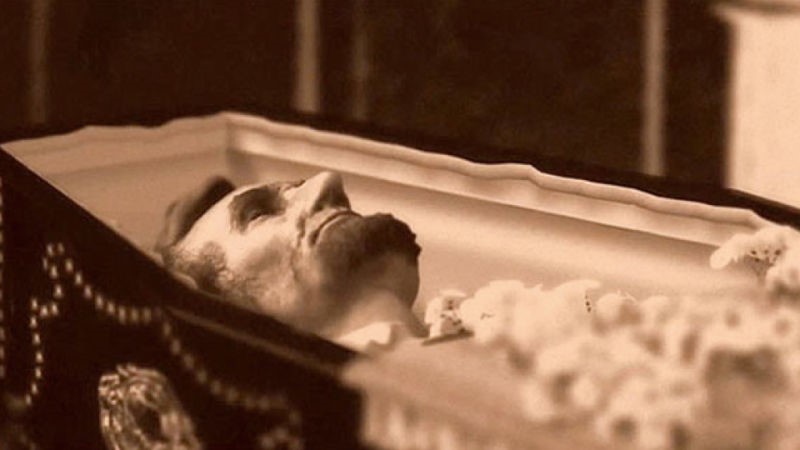For much of human history, women were the primary caretakers of the dying and dead. ‘Watchers’ tended to the physical, spiritual, and social needs surrounding death. Layers out of the dead washed, fixed, groomed, and dressed dead bodies. These ‘Watchers’ included female relatives and neighbors. After these women prepared the body, it would be viewed by mourners for up to a week and then buried. There was little to no chance of any infectious disease being spread by a body that wasn’t treated with poisonous chemicals, and no pomp involved with the burial…
In the mid-1800s, American furniture makers learned of a French technique called “arterial embalming” that was being used to preserve bodies for anatomy education in medical schools. These opportunistic cabinet makers would profit off constructing coffins while also performing rudimentary embalmings on the corpses of civil war soldiers to preserve them for the train ride home. The most common technique involved replacing the body’s blood with arsenic and mercury.
They were called “field embalmers”, nonprofessionals in makeshift tents set up next to the battlefield. At first, the embalmers approached soldiers directly before they went into battle. They provided soldiers with a card that stated that they had arranged for payment for embalming and transportation if they died. It soon became clear that this sales method was very detrimental for morale, so the military tried to stop it – to no avail.
As the war continued, embalmers followed the action. They would take over a barn or shed near the battlefield or set up a tent and embalm bodies there. At first, embalmers instructed soldiers to bring the bodies of officers only. Their families were more likely to be able to pay for embalming and for getting the body home.
Some physicians were so unscrupulous that they began charging extraordinary fees or threatening to hold the body “hostage” if the grieving family didn’t pay.
When president Lincoln was assassinated, he was embalmed for a “funeral train” that paraded his body back to his final resting place. Nothing like this had happened for any president previously, or since, and the funeral procession left an indelible effect on those who attended it. Most visitors waited in line for hours to parade by Lincoln’s open casket.
Lincoln’s appearance early in the trip was apparently so lifelike that mourners often reached out to touch his face, but the quality of the preservation faded over the length of the three-week journey. One bystander remarked that after a lengthy viewing in Manhattan, “the genial, kindly face of Abraham Lincoln” became “a ghastly shadow.”
This was the first time most Americans saw an embalmed body, and it quickly became a national sensation.
With the end of the Civil War however, the practice of embalming died out for a time. As life returned to normal, people were likely to die near home and could be buried more quickly, intimately, and without so much expense.
But soon, the unemployed embalmers, began spreading misinformation that NOT embalming a body was ‘unsanitary’ and that the techniques female ‘Watchers’ used would spread disease and could even kill you. Obviously this wasn’t true because female ‘Watchers’ had been preparing the dead for centuries without incident. Nonetheless, this became widely accepted and laws were implemented to uphold modern day funeral practices.
There was one very disheartening side effect: Families could no longer intimately bury their own. More was needed than the assistance of friends and family to inter a corpse. Death was becoming professionalized, its mechanisms increasingly out of the hands of typical Americans, the cost of which can still bankrupt grieving families.
Thus was born the American funeral industry scam, with embalming as its cornerstone, as families were now forced to hand over control of their loved ones’ bodies to a funeral director. As a result, the cost of burying the dead has soared. The median cost of a funeral and burial today, including a vault to enclose the casket, is from $8000 to $12,000, with American funerals typically being the most expensive in the world.
The capitalistic funeral industry now generates billions of dollars a year for funeral directors, casket and vault manufacturers, cemetery owners, florists, embalming-chemical companies, and other burial-related businesses.
This unique Westernized approach to interment is unlike death rites anywhere else in the world, and no other country in the world embalms their dead at a rate even approaching that of the U.S.
America now struggles immensely to deal with overcrowding in cemeteries. European countries also struggle to deal with limited land resources for burial, with countries such as Greece requiring that graves are “recycled” every three years.
The majority of people in the rest of the world are cremated.

